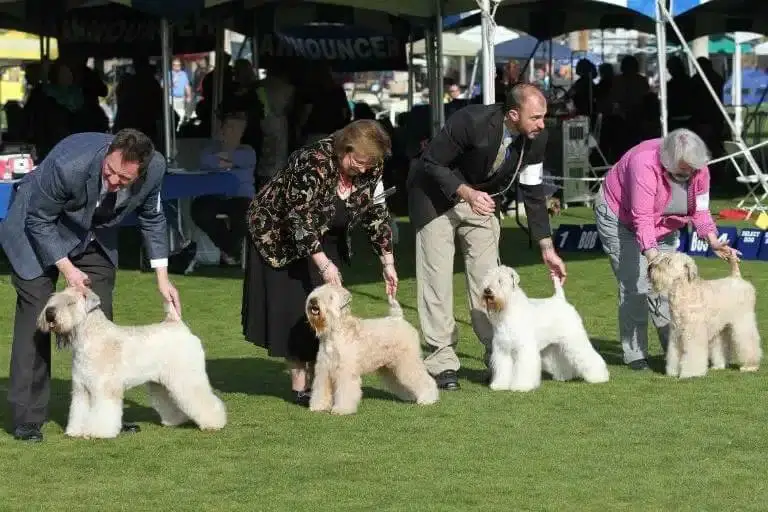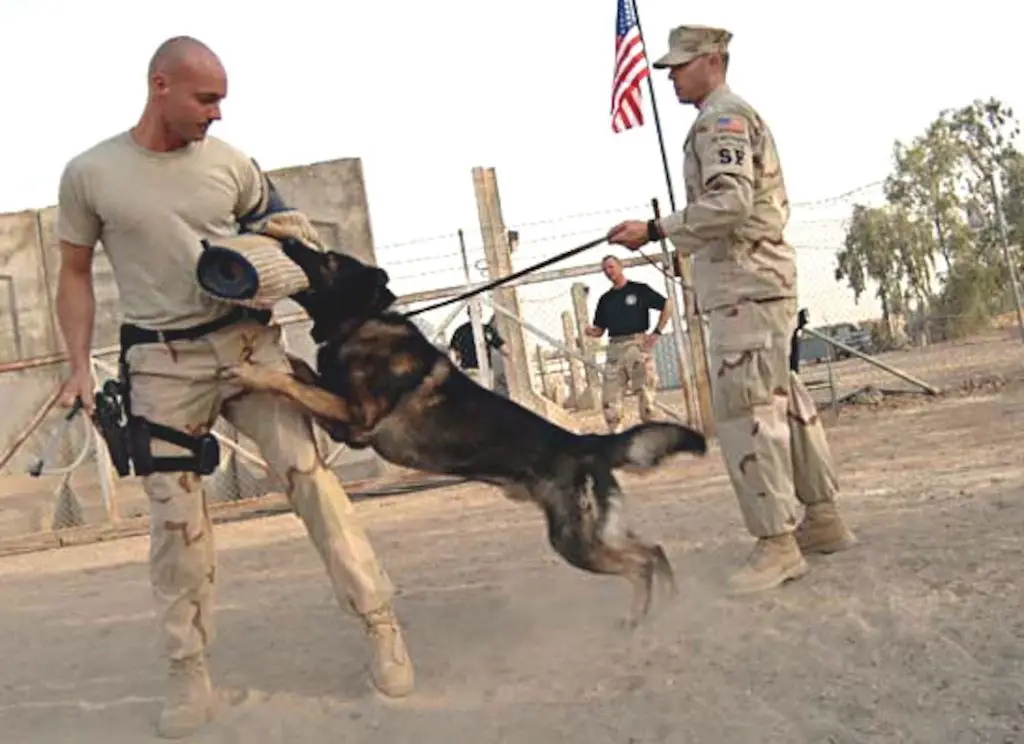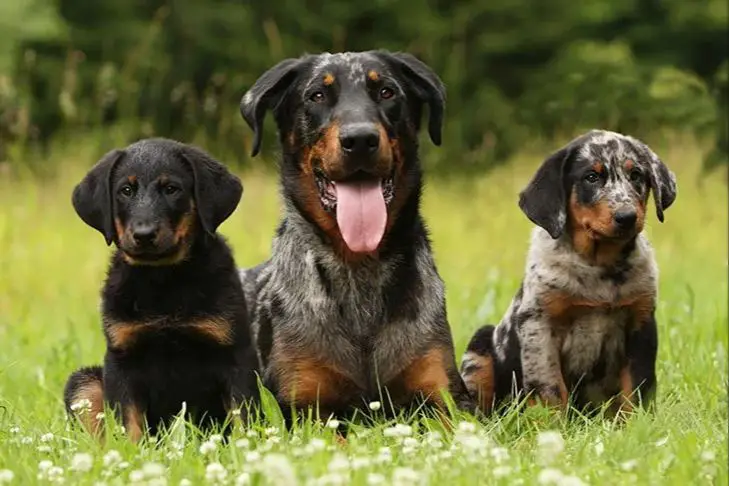Introduction
Germany is well known for having a huge variety of dog breeds that originated in the country. In fact, Germany has over 80 recognized dog breeds, more than any other country in the world. Many of the most popular dog breeds worldwide originated in Germany, including Dachshunds, Rottweilers, German Shepherds, and Poodles. The large number of German dog breeds developed over centuries due to the country’s diverse landscapes, hunting traditions, emphasis on dog breeding and shows, and strict breeding rules. German breeds are prized as family pets, working dogs, herders, hunters, and show dogs. This article will explore the various factors that contributed to Germany becoming the top dog breeding nation in the world.
History of Dog Breeding in Germany
Dog breeding in Germany has a long and storied history dating back hundreds of years. The early origins of dog breeding in the region can be traced back to the Middle Ages when nobles and aristocrats began selectively breeding dogs for hunting and guarding their estates. Specific breeds like the German Shepherd, Dachshund and Boxer can directly trace their lineage to dogs bred in Germany during this time period.
In the late 1800s, dog breeding in Germany became more structured and organized. Breeders began forming kennel clubs and registering purebred dogs. The Phylax Society, formed in 1891, was one of the first dog clubs established in Germany to preserve native dog breeds. They created breed standards and pedigrees for breeds like the German Shepherd Dog, Boxer, and Dachshund. This early organization and documentation helped cement Germany’s reputation as a leader in dog breeding.
Germany’s long history of precise, methodical dog breeding helped establish many unique German breeds that are now popular worldwide. Their consistency in documented pedigrees also assisted later breeders and kennel clubs in maintaining the purity of German breeds.

Sources:
Geographic Diversity
Germany has a variety of geographic regions that have fostered different dog breeds over the centuries. In the mountainous southern regions like Bavaria and the Alps, sturdy mountain dogs were bred to help shepherds, protect livestock from predators, and pull carts. The Rottweiler, Bernese Mountain Dog, Greater Swiss Mountain Dog, and Saint Bernard originated in these colder mountain areas. In contrast, Germany also has flat northern plains and coastal regions along the North Sea and Baltic Sea. Scent hounds like the Dachshund were bred to hunt badgers and other animals that lived underground in this region. Retrievers like the German Wirehaired Pointer were bred to retrieve waterfowl from the marshes and rivers. Germany also has dense forests like the Black Forest that required agile dogs good at tracking game through the woods, like the German Shorthaired Pointer and Hanover Hound. Even cities like Berlin bred specialized urban companion dogs like the Pomeranian. So Germany’s diverse landscapes fostered specialty breeds adapted to the local climate and terrain.
Hunting Tradition
Germany has a strong history and tradition of hunting which dates back centuries. Hunting was an important pastime and a means of obtaining food, especially among the aristocracy and landed gentry. This created significant demand for specialized hunting dogs that were bred to assist in various hunting activities.
Pointers, retrievers, scent and tracking hounds were all developed in Germany to serve the needs of hunters. For example, the German Shorthaired Pointer was developed in the 19th century to be an all-purpose gundog for hunting upland game birds (History of the German Pointer). The Deutsch-Drahthaar, a German versatile hunting dog, was also created in the late 19th century to be the ideal canine hunting companion (History of the Deutsch-Drahthaar).
This strong culture around hunting drove specialization and demand for tailored hunting dogs, leading to the development of many breeds native to Germany.
Herding Dogs
Many of Germany’s famous dog breeds originated as herding dogs for pastoral livelihoods. Sheepherding has been an important part of the rural economy and culture in Germany for centuries, requiring intelligent, hard-working dogs to assist with managing flocks. The strong herding instinct found in breeds like German Shepherds, Collies, and various Sheepdogs reflects generations of specialized breeding to create optimal working dogs for shepherds and farmers.
According to an article on the news agency dpa, Germany holds an annual national herding competition called Bundesleistungshüten where the country’s top shepherds demonstrate their skill alongside prized herding dogs like border collies managing flocks of hundreds of sheep. These working competitions reinforce the continuing importance of herding dogs in German culture.
Source: Article on annual herding competition
Service Dogs
Dogs have been assisting humans with disabilities for centuries. Some of the earliest records come from Germany, where disabled veterans returning from World War I were paired with dogs to help them with daily tasks. In 1916, the world’s first guide dog school opened in Germany by Dr. Gerhard Stalling to train German Shepherds to guide veterans blinded in battle (Source).
Another pioneering program began after wealthy American socialite Dorothy Harrison Eustis trained German Shepherd dogs in Switzerland. She sent one of her dogs to Morris Frank, a blind American man who wanted a guide dog. Impressed with the dog’s abilities, Eustis eventually established the first guide dog school in the United States in 1929 with Frank’s help, called The Seeing Eye (Source).
In Germany after World War I, thousands of soldiers returned blinded from mustard gas. The modern guide dog movement originated in Germany at this time as schools were founded to train German Shepherds as guide dogs for these veterans (Source). The German Shepherd breed became the preeminent choice for guide and service dogs due to their intelligence and trainability.
Dog Shows and Breeding
The rise of dog shows and formal kennel clubs in the late 19th century helped drive the development of new breeds in Germany. The first dog show in Germany was held in 1863 in Hamburg, with the founding of the Berliner Hundeführer Club marking the start of the official kennel club movement in Germany in 1891 (World Dog Show). Dog shows provided a venue for breeders to showcase dogs and popularize new breeds they had developed. Winning recognition at major shows helped validate and propagate new breeds.
The emphasis on conforming to strict breed standards at dog shows accelerated specialized breeding in Germany. Breeders aimed to develop dogs that would perform well in the show ring by selectively breeding dogs with certain desired physical and temperamental traits. This focus on breeding for show exacerbated the divergence of working dogs from their original utilitarian purposes. The intensified breeding practices also led to overspecialization and exaggeration of certain features in some breeds over time.
World War Influences

The World Wars impacted dog breeding patterns and spread of dogs in Germany. During World War I, Germany utilized over 30,000 dogs, primarily German Shepherds, for military duties such as messenger dogs, Red Cross dogs, guard dogs, and sled dogs (Army History, 2021). Their successful use of dogs in WWI encouraged further development of German dog breeds for military applications.
When World War II began, many German dog breeds were again recruited for military and police work, including German Shepherds, Rottweilers, and Doberman Pinschers. Roughly 75% of dogs used in combat were Dobermans while 25% were German Shepherds (UT Vet Med, 2022). Unfortunately after the war, many of these highly trained military dogs were euthanized out of fear they could not be retrained for civilian life (Quora, 2022).

Strict Breeding Practices
Germany is known for having very strict breeding practices and standards when it comes to dogs. Breeders in Germany must follow strict regulations set by the national kennel club and breeding organizations. There is a strong focus on health, temperament, and conformance to the breed standard.
For example, German Shepherd breeders must test their dogs for hip and elbow dysplasia and only breed dogs with good scores. According to one German Shepherd breeder, “We x-ray our dogs for hips and elbows and only breed A1 and A2 hips and Normal elbows” (source). They also pay close attention to the dog’s lineage and history of health and traits.
There are strict rules about the age and frequency dogs can be bred. Breeding puppy mills are banned in Germany. Dogs must reach maturity before breeding and have time to recover between litters. These practices promote better health and temperament. According to the German Shepherd Dog Club, “working dog breeds should only be bred from dogs which have been character tested” (source).

The breeding culture in Germany focuses on quality, not quantity. Rather than producing litters as quickly as possible, German breeders take their time to carefully plan each litter. They keep impeccable records and have a deep knowledge of their breed’s history. This level of dedication to responsible breeding practices allows Germany to produce some of the world’s finest working, sporting, and companion dogs.
Conclusion
In summary, Germany was an ideal location for the development of many dog breeds due to its geographic diversity, strong hunting and herding traditions, culture of dog shows and strict breeding practices, and influences from major historical events like World Wars. The varied terrain and climate across different German regions allowed for specialized breeds to emerge based on local needs. Germans have long relied on dogs for help in hunting game and herding livestock, resulting in breeds with outstanding abilities. Dog shows provided a venue for enthusiasts to showcase prized breeds and progress selective breeding. Rigorous breeding programs and record-keeping, including modern practices like DNA testing, have preserved unique German breeds. Through all of Germany’s history – from before industrialization to post-war reconstruction – dogs have remained treasured companions. This confluence of factors gave rise to over 80 breeds that are now recognized worldwide for their intelligence, versatility, and working ability.